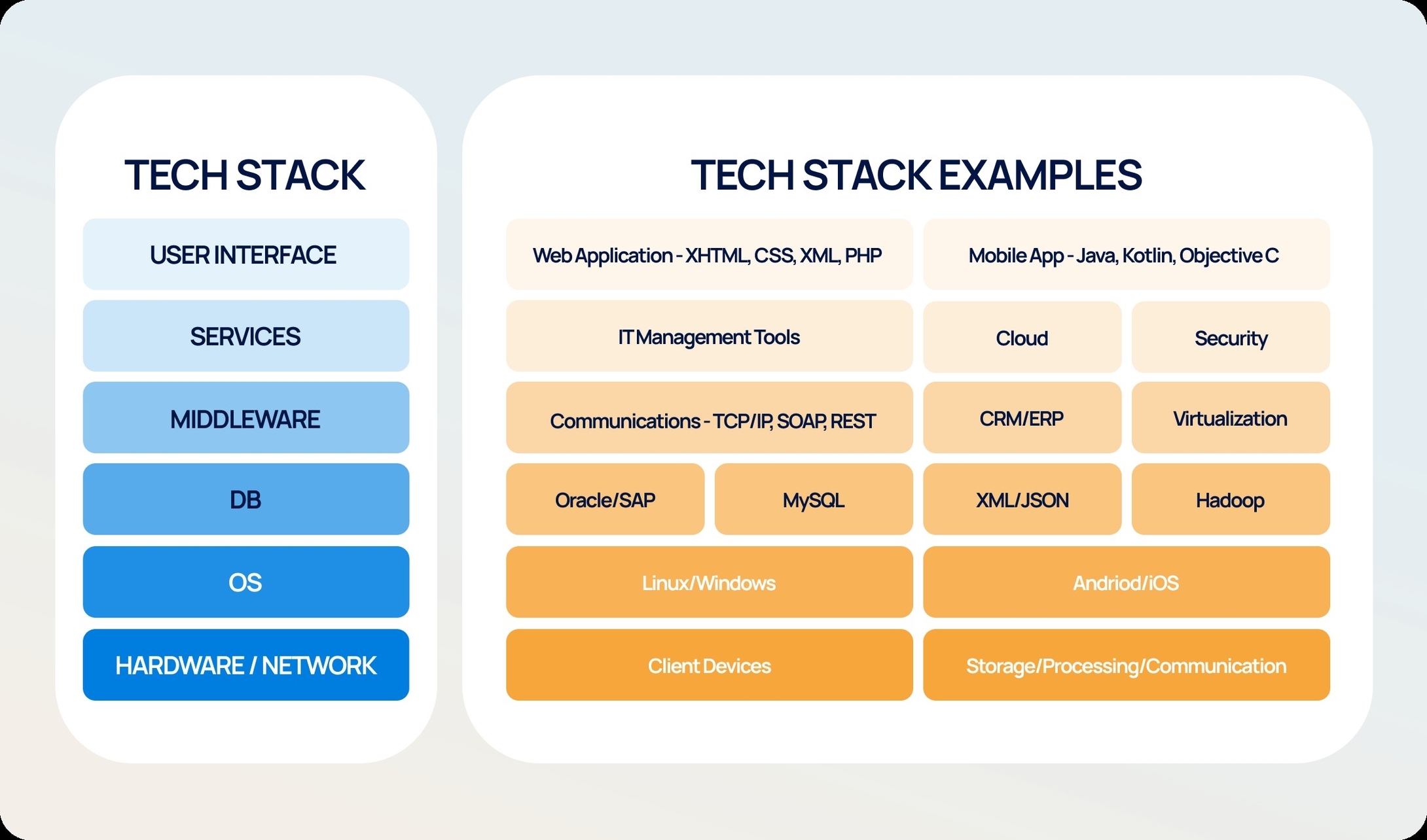
A technology stack is a set of technologies that are used to build an application, such as a web, mobile, or IoT app. A technology stack typically consists of different layers, such as the operating system, the programming language, the server, the database, the framework, and the API. Each layer performs a specific function and interacts with other layers to create a complete software solution.
ome examples of popular technology stacks are:
– LAMP: This stands for Linux (operating system), Apache (web server), MySQL (database), and PHP/Perl/Python (scripting languages). This is one of the oldest and most widely used tech stacks for building web applications, especially on open-source platforms. LAMP is known for its reliability, security, and compatibility with various web standards and frameworks.
– MEAN: This stands for MongoDB (database), Express.js (web framework), AngularJS (front-end framework), and Node.js (runtime environment). This is a modern and full-stack JavaScript-based tech stack for building dynamic and scalable web applications. MEAN is known for its high performance, flexibility, and ease of development and deployment.
– MERN: This is a variation of MEAN, where React (front-end framework) replaces AngularJS. React is a popular and powerful library for creating user interfaces with reusable components. MERN is known for its fast development, rich user experience, and support for server-side rendering and SEO.
– Ruby on Rails: This is a tech stack that uses Ruby (programming language) and Rails (web framework) as the core technologies for building web applications. Ruby on Rails is known for its convention over configuration approach, which simplifies and speeds up the development process. Ruby on Rails also offers a large and active community, a rich set of libraries and tools, and a mature and stable platform.
– .NET: This is a tech stack that uses .NET (software framework) and MS SQL Server (database) as the core technologies for building web, desktop, mobile, and cloud applications. .NET is known for its cross-platform compatibility, robustness, and support for multiple programming languages, such as C#, VB.NET, F#, and C++. .NET also offers a comprehensive and integrated development environment, Visual Studio, and a cloud computing platform, Microsoft Azure.
These are just some of the examples of technology stacks that are used by developers and companies around the world. There are many other tech stacks that can be tailored to suit different needs and preferences, such as Java, ASP.NET, Django, Laravel, Spring, and more. The choice of a tech stack depends on various factors, such as the type, size, and complexity of the application, the budget
